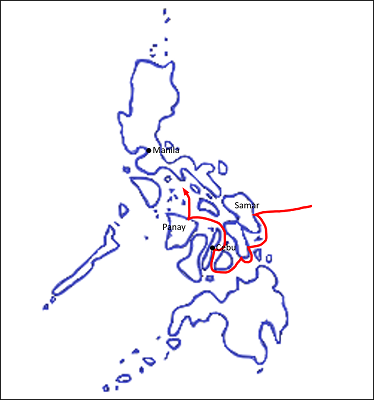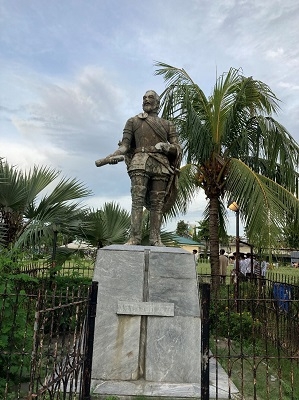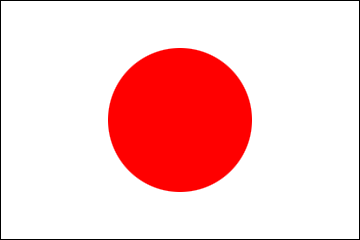Letter from Cebu (No.4) “Philippine History started in Cebu – the founding of Manila”
2022/7/20
Letter from Cebu (No.4)
“Philippine History started in Cebu – the founding of Manila”
“Philippine History started in Cebu – the founding of Manila”
Legazpi moved from Cebu three years after constructing the settlement there. He may have been motivated by the scarcity of food in Cebu and the desire for resourceful lands. Another explanation says that he felt pressure of Portuguese forces from the south.
In fact, in September 1568, seven Portuguese ships entered the port of Cebu, and demanded Spaniards to leave the land. With the help of Cebuanos, Legazpi succeeded in forcing the ships to leave Cebu. But, this incident may have triggered Legazpi to move from Cebu to the north.
The Treaty of Zaragoza between Spain and Portugal in 1529 sets the demarcation of the two powers along the 144° 30’east. According to this treaty, the Philippines lay on the Portuguese side of the demarcation line. But, since the treaty’s main purpose was to ensure the Portuguese control over the Moluccas, Portugal, in the end, did not pay much attention to the scope of the treaty, especially the location of the Philippines vis-a-vis the demarcation line.
Legazpi and his men, sailed to Panay in 1569, and founded the second Spanish settlement on the banks of the Panay River (Now, Roxas, Capiz Province, Panay Island). Legazpi’s forces, then, moved to Mindoro island and landed in Manila in May 1570. The Legazpi forces defeated Rajah Sulayman’s forces there and conquered Manila. Legazpi arrived in Manila in 1571,and founded a permanent settlement there. King of Spain appointed him as Governor and Captain-General of the Philippines.
In fact, in September 1568, seven Portuguese ships entered the port of Cebu, and demanded Spaniards to leave the land. With the help of Cebuanos, Legazpi succeeded in forcing the ships to leave Cebu. But, this incident may have triggered Legazpi to move from Cebu to the north.
The Treaty of Zaragoza between Spain and Portugal in 1529 sets the demarcation of the two powers along the 144° 30’east. According to this treaty, the Philippines lay on the Portuguese side of the demarcation line. But, since the treaty’s main purpose was to ensure the Portuguese control over the Moluccas, Portugal, in the end, did not pay much attention to the scope of the treaty, especially the location of the Philippines vis-a-vis the demarcation line.
Legazpi and his men, sailed to Panay in 1569, and founded the second Spanish settlement on the banks of the Panay River (Now, Roxas, Capiz Province, Panay Island). Legazpi’s forces, then, moved to Mindoro island and landed in Manila in May 1570. The Legazpi forces defeated Rajah Sulayman’s forces there and conquered Manila. Legazpi arrived in Manila in 1571,and founded a permanent settlement there. King of Spain appointed him as Governor and Captain-General of the Philippines.

(Movement map of Legazpi's forces in the Philippines)

(Statue of Legazpi)
located in Plaza Independencia, Cebu City
Hideki YAMAJI
Consul General of Japan in Cebu
Consul General of Japan in Cebu
(reference)
“Philippine History: Expanded and Updated Edition”, by Teodoro A. Agoncillo, Fe B. Mangahas, C&E Publishing Inc., Quezon City, Philippine (2010)
“The Discovery and Conquest of the Philippines 1521-1581”by Martin J. Noone, Historical Conversation Society(1983)
“Introduction to Filipino History” by Teodoro A. Agoncillo, Garotech Publishing (2006)
“Story of Philippine History” by Shizuo Suzuki, Chuko Shinsho, 1997
“Philippine History: Expanded and Updated Edition”, by Teodoro A. Agoncillo, Fe B. Mangahas, C&E Publishing Inc., Quezon City, Philippine (2010)
“The Discovery and Conquest of the Philippines 1521-1581”by Martin J. Noone, Historical Conversation Society(1983)
“Introduction to Filipino History” by Teodoro A. Agoncillo, Garotech Publishing (2006)
“Story of Philippine History” by Shizuo Suzuki, Chuko Shinsho, 1997
(end)
